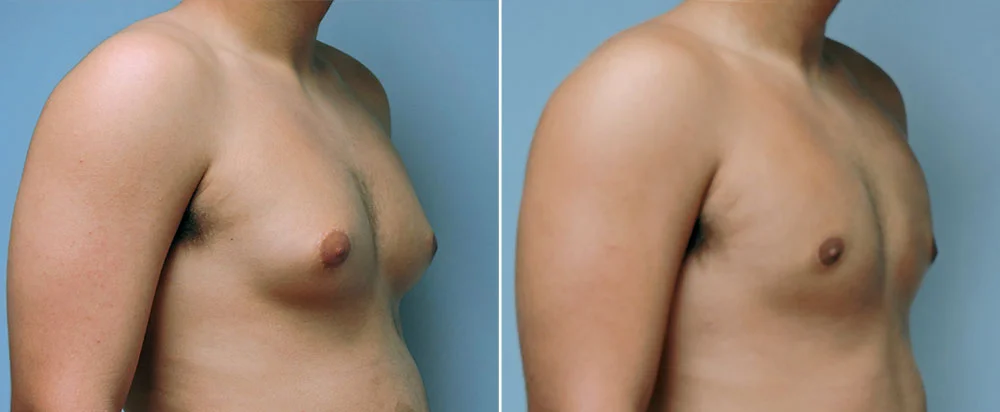When a man has the biggest breast tissue larger than usual, we call it male gynecomastia. It is a condition that is usually caused by hormonal problems in which the patient has an imbalance when releasing estrogen and testosterone.
In this article, we will discover what male gynecomastia is, its symptoms, and solutions so that you know in more detail this condition that can cause discomfort, irritation, and aesthetic complexes.
What is male gynecomastia?
As we have already anticipated, male gynecomastia is a condition that affects male breast tissue, making one or both breasts more developed than usual in a man’s body.
We are not facing a serious health condition, but it does cause self-consciousness in people who suffer from it. In addition, male gynecomastia can cause discomfort and pain in the chest area, just as women suffer when their breasts develop during puberty.
What are the symptoms of male gynecomastia?
To find out if we’re dealing with a case of male gynecomastia, you should know that there are some common symptoms. This condition can be seen with the naked eye, as the change is experienced, above all, externally: the chest is more developed and larger.
It is important to note that this condition can affect only one of the two breasts or, also, both at the same time. The patient will feel symptoms such as:
– Pain in the chest area
– Increased sensitivity in contact with T-shirts or clothing you wear
– Pain concentrated on the nipple
– The breast area is more swollen
– Occasionally, the nipple may secrete milk
What are the solutions for male gynecomastia?
It is important to note that, because this condition appears due to hormonal causes, it is often solved over time and without the need to carry out any specific treatment. However, if male gynecomastia appears due to other diseases such as cirrhosis, malnutrition, etc., the basic disease must be treated so that breast tissue returns to normal.
Likewise, the doctor may prescribe taking several drugs to improve the condition and reduce the hormonal imbalances associated with this disease. The medications to treat male gynecomastia are the following:
– Tamoxifen (Soltamox)
– Inhibitors of aromatase, such as anastrozole (Arimidex)
In addition, to solve this condition, there is also surgery that aims to eliminate excess tissue in the breast area. This is the final step of treatment, and it is only reached if the condition has not resolved on its own and if the medicines have not worked. Two surgical interventions are carried out to improve the pectoral area:
– Liposuction. Localized fat is removed, although breast tissue is not touched.
– Mastectomy. It is the intervention indicated to eliminate excess tissue in the mammary gland; it is less invasive than the previous one and requires a shorter recovery time.
However, it is always important to go to a doctor in case of presenting anomaly in the body so that the professional can advise you on the next steps to be taken and, thus, ensure strong and safe health.
Bibliography
Fabié-Boulard, A., Fabre, G., Gangloff, D., Grolleau, J. L., & Chavoin, J. Q. (2006). Gynecomastia. EMC-Nacteristic Plastic Reparative and Aesthetic Surgery, 14(3), 1-7.
Castle, P. (2018). Gynecomastia. Surgery Notebooks, 17(1), 52-57.
Calderon, W., Cabello, R., Calderon, D., Olguín, F., & Israel, G. (2010). Surgical treatment of the prominent male mammary region. Ibero-Latin American Plastic Surgery, 36(1), 19-24.
Gonzalez, G. M., Ramirez, M. C. G., Ortega, A. A. G., Del Castillo, G. C. L., Gomez, D. H., & Aroca, F. G. (2018). Male Ginecomastia. Seram.
